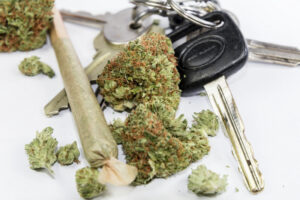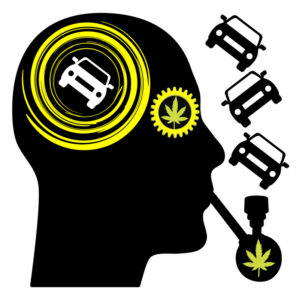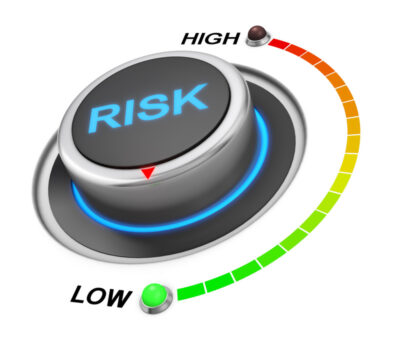Prevalence of Drug-Impaired Driving
Did You Know?
Recreational, prescription, and over-the-counter drug abuse is on the rise in the U.S.
Drug use is a persistent problem in the U.S. Prescription drug abuse is on the rise, and there is clinical evidence that drug use reduces driving performance (see Impairment section). As drugged driving has evolved over the years to include prescription and over-the counter drugs in addition to illicit/illegal drugs, drug use is not exclusive to personal time and has become a significant concern in the workplace as well. The rise in drug use may lead to more frequent impairment for employees driving both on- and off-the-job resulting in more impaired drivers on our roadways. Even if driving is not part of an employee’s specific role or responsibility in the workplace, driving to or from work under the influence of drugs is a risky driving behavior that needs to be addressed by employers. The statistics regarding drug use are staggering:
- Cannabis is the most frequently used illicit drug (by Federal law) among Americans, with an estimated 43.5 million past-year users age 12 or older in 2018.
- Nearly 18 percent of adults employed full-time, and nearly 21 percent of adults employed part-time, reported using cannabis during the previous year.
- According to the Substance Abuse and Mental Health Services Administration (SAMSHA), of the approximately 44 million adults who used illicit drugs in 2016, about 69 percent were employed.
- In 2017, 95 percent of the 70,067 US drug overdose deaths occurred among the working age population, persons aged 15-64 years.
- The Bureau of Labor Statistics (BLS) reported that overdose deaths at work from non-medical use of drugs or alcohol increased by at least 25 percent annually between 2013 and 2017.
- In 2017, 272 workplace overdose deaths accounted for 5.3 percent of workplace injury deaths compared to 1.8 percent in 2013, an increase of 3.5% only four years later.
- In 2017, 43 percent of drug overdose deaths at work occurred in only three industries – Transportation & Warehousing, Construction, and Healthcare & Social Assistance.
The Opioid crisis has also affected the workplace environment. According to the 2019 National Safety Council National Employer Survey regarding opioid usage in the workplace:
- 75 percent of employers have been affected in some way by employee use of opioids.
- 38 percent of employers have experienced absenteeism or impaired worker performance due to opioid use by employees.
- 31 percent of employers have experienced a near-miss/injury, overdose or arrest as a result of opioid use by employees.
- Employers are not fully confident in the ability of employees to identify misuse.
Drivers Who Test Positive

According to a study conducted by Brady and Li, marijuana is the second leading drug most often found in the blood of drivers involved in crashes who are tested for drugs, second only to alcohol. However, the presence of drugs in a driver’s system does not necessarily prove impairment.Tests to detect marijuana in drivers measure the level of delta-9-tetrahydrocannabinol (THC), marijuana’s mind-altering or impairing ingredient, in the blood. Research conducted by Sharma et. al found that THC can be detected in body fluids for days or even weeks after use. However, research has found that marijuana is often combined with alcohol which is known to be impairing over a blood alcohol concentration (BAC) of .08m/L.

Use of any impairing drug while driving should be restricted, even prescribed or over the counter medications. Studies have shown that the vehicle crash risk associated with marijuana in combination with alcohol, cocaine, or benzodiazepines appears to be greater than that for each drug by itself. Along with marijuana, prescription drugs are also commonly linked to drugged driving crashes.

Get the Facts!
In 2018, the National Survey on Drug Use and Health (NSDUH), a self-reporting survey, found:
- 5 million people aged 16 or older drove under the influence of alcohol in the past year and 12.6 million drove under the influence of illicit drugs.
- Men are more likely than women to drive under the influence of drugs or alcohol.
- A higher percentage of adults aged 21 to 25 drive after taking drugs or drinking than do young adults aged 16 to 20 or adults 26 or older.
- The NHTSA National Roadside Survey (NRS) in 2013-2014 found that 22.5 percent of night-time drivers tested positive for illegal, prescription, or OTC medications and only 1.5 percent of night-time drivers tested positive for a BAC above the legal limit of .08.
- Drugged drivers who were tested for drug use accounted for 11.4 percent of all drivers involved in fatal motor vehicle crashes in 2010.
The Governors Highway Safety Association (GHSA) reported:
- In 2016, 7 percent of drivers who drove while under the influence tested positive for some type of opioid.
- 54 percent of fatally injured drivers that year were tested for drugs and alcohol.
- Of those who had drugs in their system, 38 percent tested positive for marijuana, 16 percent for opioids and 4 percent for both.
- The remaining 42 percent tested positive for a variety of legal and illegal drugs, such as cocaine and Xanax.
- More than 5,300 drivers who died in fatal crashes in 2016 tested positive for drugs.
Over the Counter (OTC) medications/drugs
- A study conducted in 2007 conducted by the Federal Motor Carrier Safety Administration (FMCSA) and the National Highway Traffic Safety Administration (NHTSA), found that 17 percent of CMV drivers were reported as having “over-the-counter (OTC) drug use” at the time of a crash.
Cannabis/Marijuana
- In 2018, an online survey conducted by the Colorado Department of Transportation found that 69 percent of marijuana users said they had driven under the influence of marijuanaat least once in the past year; 27 percent said they drove high almost daily. Many recreational users said they didn’t think it affected their ability to drive safely.
- In the 2007 NRS, 8.6 percent of weekend nighttime drivers tested positive for THC. This number increased to 12.6 percent in the 2013-2014 NRS. This is a 48 percent increase in the percentage of weekend nighttime drivers who tested positive for THC.
Fatalities and Serious Injuries

The National Highway Traffic Safety Administration (NHTSA) National Center for Statistics and Analysis (NCSA) is the national repository that collects and reports traffic safety data. Data from fatal motor vehicle crashes is recorded in the NCSA Fatality Analysis Reporting System (FARS). FARS is most commonly used by researchers when presenting fatality motor vehicle crash data. When reviewing drug fatality numbers, it is again important to note that FARS drug data provides information about drug presence, rather than whether the driver was impaired by a drug at the time of a crash. However, several studies have shown that drivers with THC in their blood were roughly twice as likely to be responsible for a deadly crash or be killed than drivers who hadn’t used drugs or alcohol.

Get the Facts!
- Analyses of data from multiple studies (i.e. meta analyses) found that acute intoxication from marijuana was correlated with a modest increase in crash risk.
- A study by Dussault, et. al found that vehicle crash risk associated with marijuana in combination with alcohol, cocaine, or benzodiazepines appears to be greater than that for each drug by itself.
- Since legalization of marijuana in 2013, Colorado reports marijuana-related traffic deaths increased 151 percent, while all Colorado traffic deaths increased by 35 percent following legalization in 2016.
- Washington State’s Traffic Safety Commission reported that of those drivers who were tested, poly-drug drivers are now the most common type of impaired driver involved in Washington State fatalities, and the most common poly-drug combination is alcohol and THC.
- In Washington state, a 2016 report by the AAA Foundation for Traffic Safety found that fatal crashes involving drivers who recently used marijuana doubled after the state legalized it.
- In Washington State, between 2008-2016, the most common type of impairment found in drivers involved in fatal crashes was multi-drug impairment.
- 44 percent tested positive for two or more substances.
- Alcohol and Cannabis/Marijuana was the most common combination.
- According to a recent report by the Governors Highway Safety Association (GHSA), 44 percent of those fatally injured drivers who were tested in 2016, were positive for drugs, a larger percent, than drivers with positive alcohol tests. Over half of drivers with positive drug tests were positive for two or more drugs.
What Employers Can Do

Employers can implement a DRUG-FREE POLICY.
See WORKPLACE PREVENTION section for more information.
